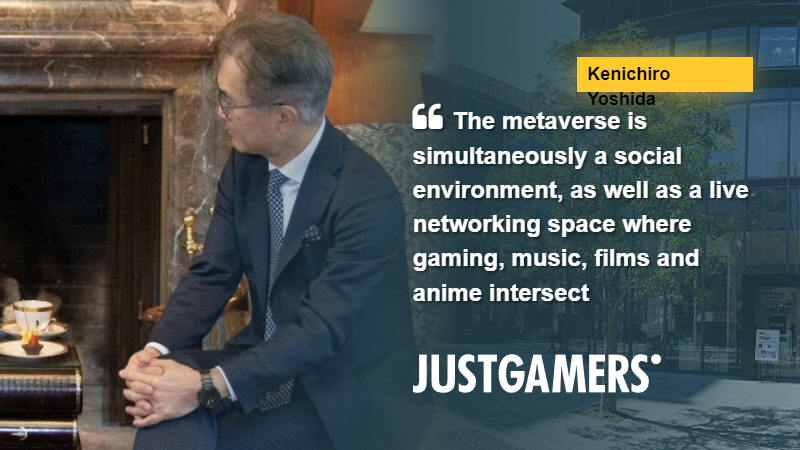Published on: 19/05/2022
Sony announces plans to become major player in metaverse industry

Japanese entertainment giant Sony announced Wednesday plans to become a major player in the augmented virtual world of the metaverse.
Sony said it envisioned the metaverse as a massive online network that integrates media, services, and social interaction. Having a wealth of game IPs, music licenses, produced films and TV shows, as well as rights to anime through its Crunchyroll streaming service, makes Sony well-suited for this plan.
Sony said they aimed to bring together gaming, live events, music, and entertainment content under a single digital umbrella. Users are expected to gather in digital spaces to watch live music events and sports broadcasts, using virtual avatars.
As representation is an essential part of the metaverse, Chief Executive Kenichiro Yoshida said argued that “the metaverse is at the same time a social space and live network space where games, music, movies, and anime intersect”.
“When it comes to live experiences that share time and space, music immediately comes to mind. Sony Music artists have already performed many live performances in game spaces,” he continued.
Many have reacted to the plans, insisting that immersive metaverses will disrupt many aspects of life, from how people socialize to how they play video games. Sony may suffer from that, as their PlayStation Consoles dominated the previous era of gaming. It is then understood that Sony now wants to get on board now to avoid being left out of a universe of cross-platform free-play gaming.
PlayStation Home should return
Sony needs to have a digital representation of its userbase if it wants to dominate this space. It should be possible for users to create and customize their own metaverse characters, including accessories, hairstyles, outfits, and everything else. The concept is similar to Xbox avatars, which Meta has also imitated with Horizon Worlds.
In the days of the PlayStation 3, Sony had something similar in the form of PlayStation Home. The platform was a huge online project, in which players created unique digital spaces and avatars. With a variety of skins, outfits, and accessories straight from games, everything was very customizable.
Sony partnered with major publishers like Konami, Bandai Namco, and even Marvel for themed skins and outfits that offered huge monetization and advertising opportunities. Publishers could create “Rooms” or digital spaces tailored for a particular brand or game. Additionally, developers could develop games and launch them on PlayStation Home. PlayStation Home also allowed gamers to watch digital live events like E3 and movies on demand.
PlayStation Home was a predecessor to what companies now refer to as the metaverse. However, it crumbled under the strain of its own reckless ambition. The platform was ravaged by performance problems, glitches, and server congestion.
Infrastructure-wise, the company is in a much better place than ever before. Sony also relies on Microsoft’s Azure service to operate its cloud network. The PlayStation Home concept needs to be revived at the very least. It does not need to be as extravagant as it was back then, but the presence of some kind of digital environment would be valuable for the company.



